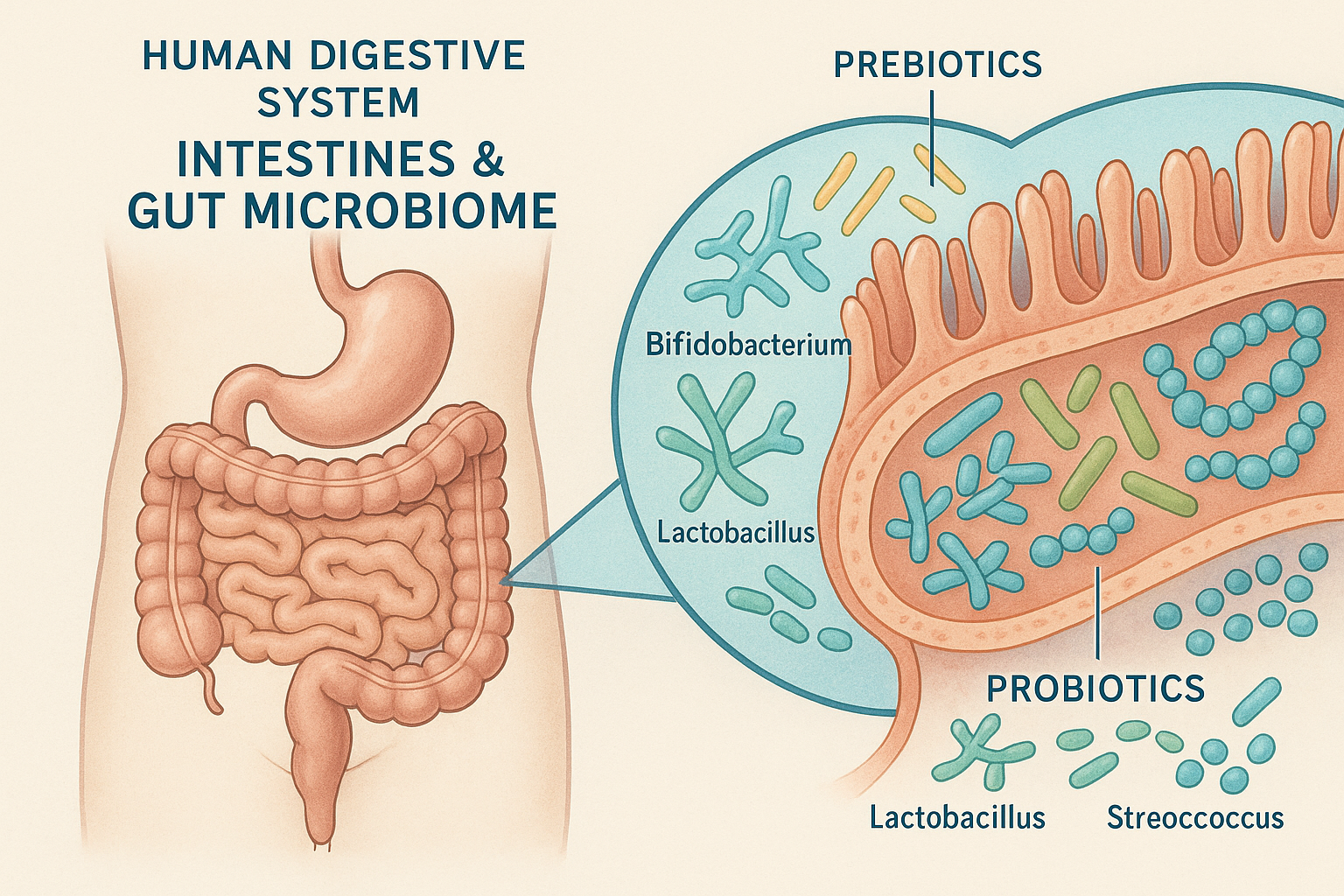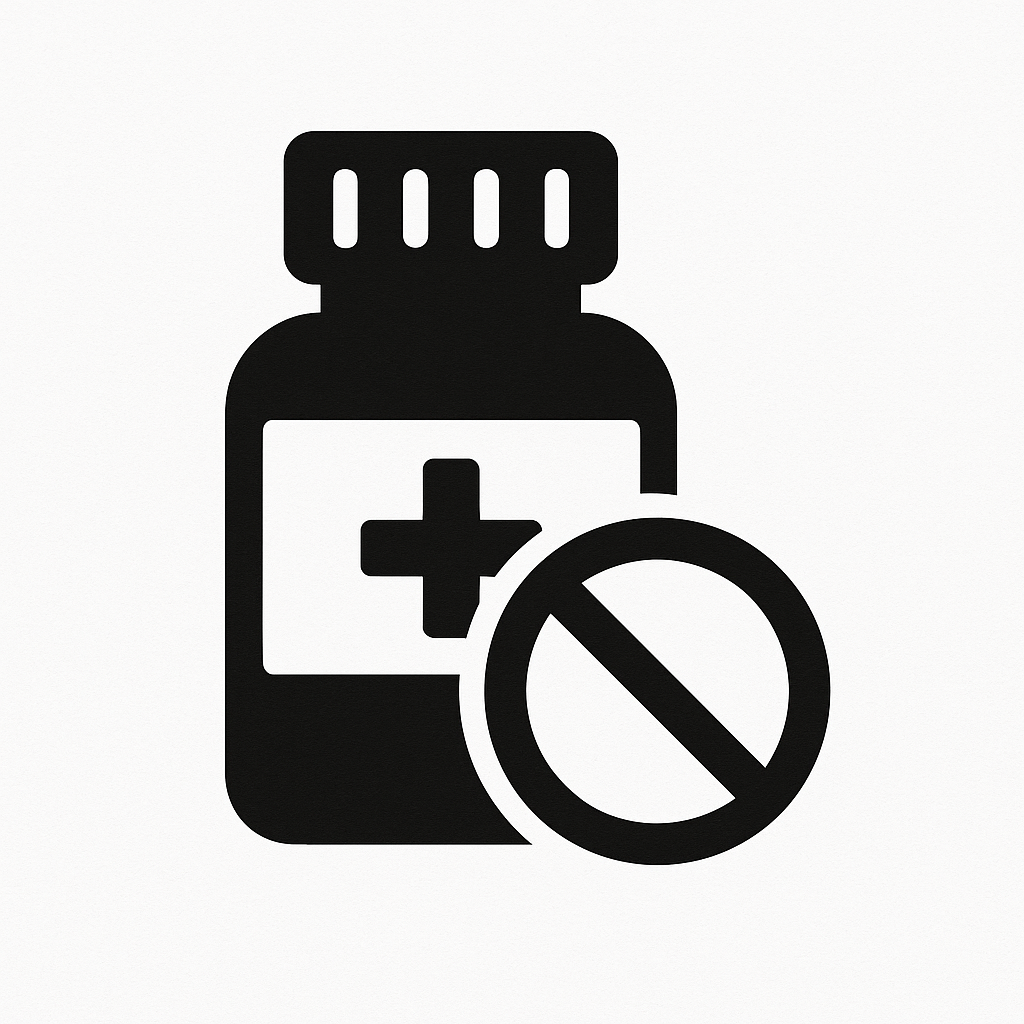
Prebiotics and Probiotics: Why You Need Both for Total Gut Health
When it comes to health, few systems are as vital as the gut. Often referred to as the “second brain”, your gut influences digestion, immunity, metabolism, and even mental well-being. At the center of gut health are two key players: prebiotics and probiotics.
While they may sound similar, they serve distinct but complementary roles. Probiotics are the “good bacteria” that support a healthy gut microbiome, while prebiotics are the fibers and nutrients that feed those bacteria. For total gut health, you need both.
This article breaks down the science of prebiotics and probiotics, explains why they’re essential, and offers a step-by-step approach to improving your digestive wellness naturally.
What Are Probiotics?
Probiotics are live microorganisms (mainly bacteria and some yeasts) that, when consumed in adequate amounts, provide health benefits.
Common Probiotic Strains:
-
Lactobacillus – Supports digestion and nutrient absorption, helps break down lactose.
-
Bifidobacterium – Promotes a balanced gut microbiome, reduces inflammation.
-
Saccharomyces boulardii – A probiotic yeast that protects against diarrhea and infections.
Benefits of Probiotics:
-
Improve digestion and nutrient absorption.
-
Strengthen immune function.
-
Reduce symptoms of IBS (irritable bowel syndrome).
-
Balance gut flora after antibiotic use.
-
Enhance mood by influencing the gut-brain axis.
What Are Prebiotics?
Prebiotics are non-digestible fibers and compounds that feed beneficial gut bacteria. Think of them as “fertilizer” for your probiotics.
Common Prebiotic Sources:
-
Chicory root
-
Garlic, onions, leeks
-
Bananas (slightly green)
-
Jerusalem artichokes
-
Asparagus
-
Whole grains (oats, barley)
Benefits of Prebiotics:
-
Stimulate growth of healthy gut bacteria.
-
Improve bowel regularity and digestion.
-
Enhance mineral absorption (calcium, magnesium).
-
Support healthy blood sugar levels.
-
Contribute to long-term gut microbiome stability.
Prebiotics vs. Probiotics: The Key Difference
-
Probiotics: Live bacteria that directly add beneficial organisms to your gut.
-
Prebiotics: Food for the probiotics, helping them thrive.
Together, they form a symbiotic relationship that keeps your gut balanced and resilient.
Why You Need Both
1. Balanced Microbiome
Probiotics replenish beneficial bacteria, but without prebiotics, they may not thrive long-term. Prebiotics ensure a stable environment for probiotics to flourish.
2. Stronger Digestion
Probiotics aid digestion by breaking down food, while prebiotics ensure these bacteria multiply and remain active.
3. Immune Support
Over 70% of the immune system resides in the gut. Prebiotics and probiotics together enhance immune defenses, making the body more resilient against infections.
4. Mental Health Benefits
Gut bacteria influence neurotransmitters like serotonin. A strong gut microbiome (supported by both prebiotics and probiotics) promotes better mood regulation.
5. Long-Term Gut Health
Probiotics may give quick relief from digestive issues, but prebiotics build a sustainable ecosystem for lasting benefits.
Signs You May Need Prebiotics & Probiotics
-
Frequent bloating or gas
-
Irregular bowel movements (constipation/diarrhea)
-
Weak immunity or frequent infections
-
Sugar cravings and low energy
-
Brain fog or mood swings
-
History of antibiotic use
90-Day Gut Health Action Plan
Phase 1 (Days 1–30): Reset & Introduce
-
Eliminate processed foods and excess sugar.
-
Start a probiotic supplement (multi-strain formula).
-
Eat fermented foods like yogurt, kefir, sauerkraut, or kimchi.
Phase 2 (Days 31–60): Nourish & Support
-
Add prebiotic-rich foods daily (onions, garlic, oats, bananas).
-
Take a prebiotic supplement if diet is insufficient.
-
Increase hydration and fiber intake to support gut motility.
Phase 3 (Days 61–90): Strengthen & Maintain
-
Combine both prebiotic and probiotic supplements.
-
Monitor improvements in digestion, mood, and energy.
-
Maintain a long-term gut-friendly diet rich in whole foods.
Best Food Sources
Probiotic Foods:
-
Yogurt (with live cultures)
-
Kefir
-
Miso
-
Tempeh
-
Kimchi
-
Sauerkraut
Prebiotic Foods:
-
Garlic
-
Onions
-
Asparagus
-
Oats
-
Bananas (green)
-
Apples (pectin-rich)
Benefits of Combining Prebiotics & Probiotics
-
Reduced digestive discomfort (gas, bloating, constipation).
-
Improved absorption of vitamins and minerals.
-
Enhanced immune defenses against seasonal illness.
-
Balanced weight and metabolism.
-
Better mood and mental clarity through gut-brain connection.
Common Myths About Gut Health
-
“Probiotics work instantly.” – Some relief may be quick, but lasting change requires consistency.
-
“I only need probiotics, not prebiotics.” – Without prebiotics, probiotics don’t flourish.
-
“All probiotic foods are the same.” – Different strains deliver different benefits. Diversity matters.
-
“Gut health only affects digestion.” – It also influences immunity, mood, weight, and skin health.
Final Thoughts
For total gut health, you need both prebiotics and probiotics. Probiotics provide the beneficial bacteria, while prebiotics nourish and sustain them. Together, they form the foundation for strong digestion, robust immunity, balanced metabolism, and even improved mental well-being.
Think of probiotics as planting seeds, and prebiotics as the fertilizer that helps them grow. Only by combining the two can you achieve lasting gut health.
Ready to optimize your digestion and overall wellness? Explore premium gut health and digestive support supplements designed to deliver both prebiotics and probiotics. Visit Matevara’s Gut Health & Digestive Support Collection
Disclaimer: This article is for informational purposes only and does not constitute medical advice. Always consult with a qualified healthcare provider before starting any new supplement regimen, especially if you have existing health conditions or take medications.
Share








